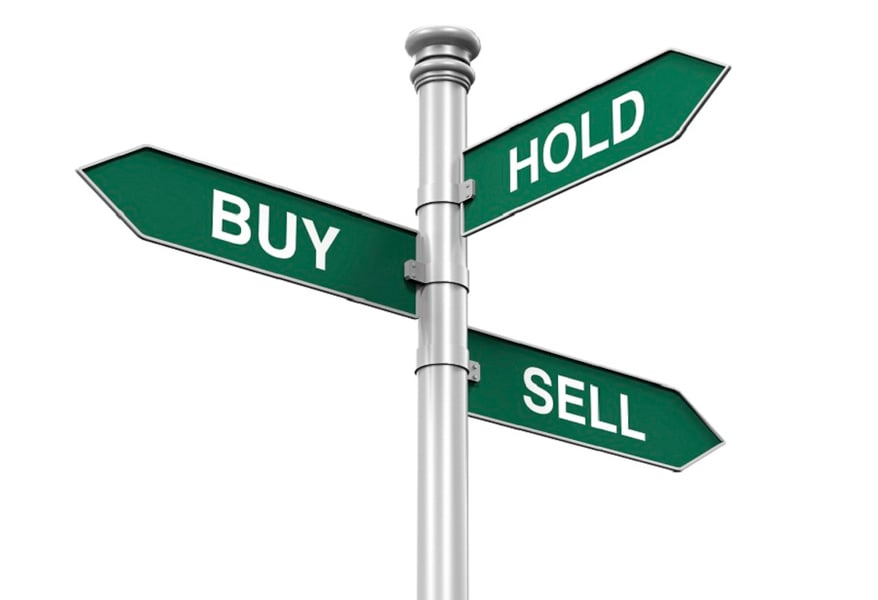There's nothing quite like a bout of stock-market volatility to test an investor's true tolerance for risk. Along those same lines, fans of buy-and-hold investing also get an opportunity to test their mettle.
Buy and hold, which naysayers sometimes slight as “buy and hope,” gets a bad rap when the markets are choppy or bearish, and it is often taken for granted when the markets are charging higher, as they have been for much of the past six years.
As a devout
buy-and-hold investor, I confess to sometimes feeling like a chump when I hear tales of fearless selling near the top or stop-loss orders that got somebody out of the market before a big pullback.
It feels almost like driving down the highway at the speed limit while watching another driver blow past in a much nicer car. Even if I'm not actively hoping for it, I won't feel terrible if I see that driver caught in a speed trap around the next bend.
The
logic of the odds is often the best case for buy-and-hold investing, especially during periods of market volatility.
ODDS FAVOR BUCKLING UP
Todd Rosenbluth, director of mutual fund and ETF research at S&P Capital IQ, looked at every significant pullback in the S&P 500 Index since 1945 and found that the odds favor buckling in and sitting tight when the going gets rough.
From 1945 through the end of last month, investors have weathered 59 pullbacks of between 5% and 10%, with an average size of 7%.
Mr. Rosenbluth found that on average, it took one month for the decline to unfold and two months for the market to return to its pre-pullback levels.
Slightly more severe market corrections of between 10% and 20% have happened 20 times since 1945, including the one we saw over the past few weeks.
During the 19 prior corrections, it took the market five months on average to reach the bottom and an average of four months to recover.
Then there's a bear market cycle, which includes a decline of 20% or more, something that's happened 12 times since 1945.
Bear markets represent the ultimate test for a buy-and-hold investor because on average it took 14 months for the market to reach its nadir and 25 months to get back to break even from the bottom.
“If you can be patient and ignore or stomach the volatility, it is better to be holding on and even better to be buying when there's increased volatility,” Mr. Rosenbluth said. “If you've got a five- to 10-year time horizon, we think the markets will be higher than they are today, but the market is likely to be more volatile between now and the end of the year.”
We've all heard the argument that
the trouble with timing the market is you have to be right twice and you only have to be wrong once.
It also shouldn't be news that some of the biggest proponents of buy-and-hold investing are mutual fund companies that live off asset-management fees.
MANY SIDES TO THE DEBATE
Clearly, there are many sides to the debate, which is why at times like these it's so tempting to scan the growing universe of innovative exchange-traded products and various brokerage platform tools that make it possible for anyone to dart in and out of the market on a whim.
John Eckel, president of Pinnacle Investment Management Inc., confessed to trying to time the market multiple times during the 24 years he's been in the advisory business.
“Clients love it when you get it right, but sometimes you get it right and sometimes you don't,” he said. “These days, we tell clients we don't try to time the market and we don't think anybody else can do it and get it right.”
Mr. Eckel, who added that he “would have never been able to predict the market moves of the past month,” said being open to market timing “makes people too aggressive and too conservative at the wrong times.”
Two weeks ago, after the Dow Jones Industrial Average dropped 1,000 points at the opening bell, I
told a local news anchor that investors should deliberately ignore their retirement savings accounts and instead go play golf or visit their mother.
Initially, I followed my own advice, but a few days later I couldn't resist checking my retirement account balance. I didn't like what I saw, but I didn't make any changes. I haven't checked it since and don't intend to for a while.
FLEXIBILITY NEEDED
David Mullins, owner of David Mullins Wealth Management, summed it up best by pointing out, “Buy and hold only works if you can stick out the bad times.”
Of course, buy and hold is a relative concept that needs a certain amount of flexibility to allow for liquidity, rebalancing and various life events like retirement.
“True buy-and-hold investing without rebalancing, or too frequent rebalancing, leads investors to stray from their true risk tolerance and be overweight asset classes experiencing periods of irrational exuberance,” said Daniel Crosby, president of IncBlot Behavioral Finance.
“Remember that the majority of market returns occur in a small minority of days and that the big return days tend to be unpredictable and hot on the heels of awful news,” he added. “Whether you are active- or passive-biased, it almost never makes sense to leave the equity markets entirely.”
In other words, dollar-cost-average into a solid long-term strategy, then go play golf or visit your mother.







